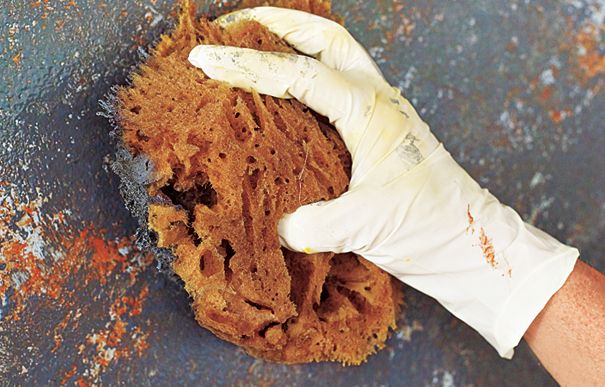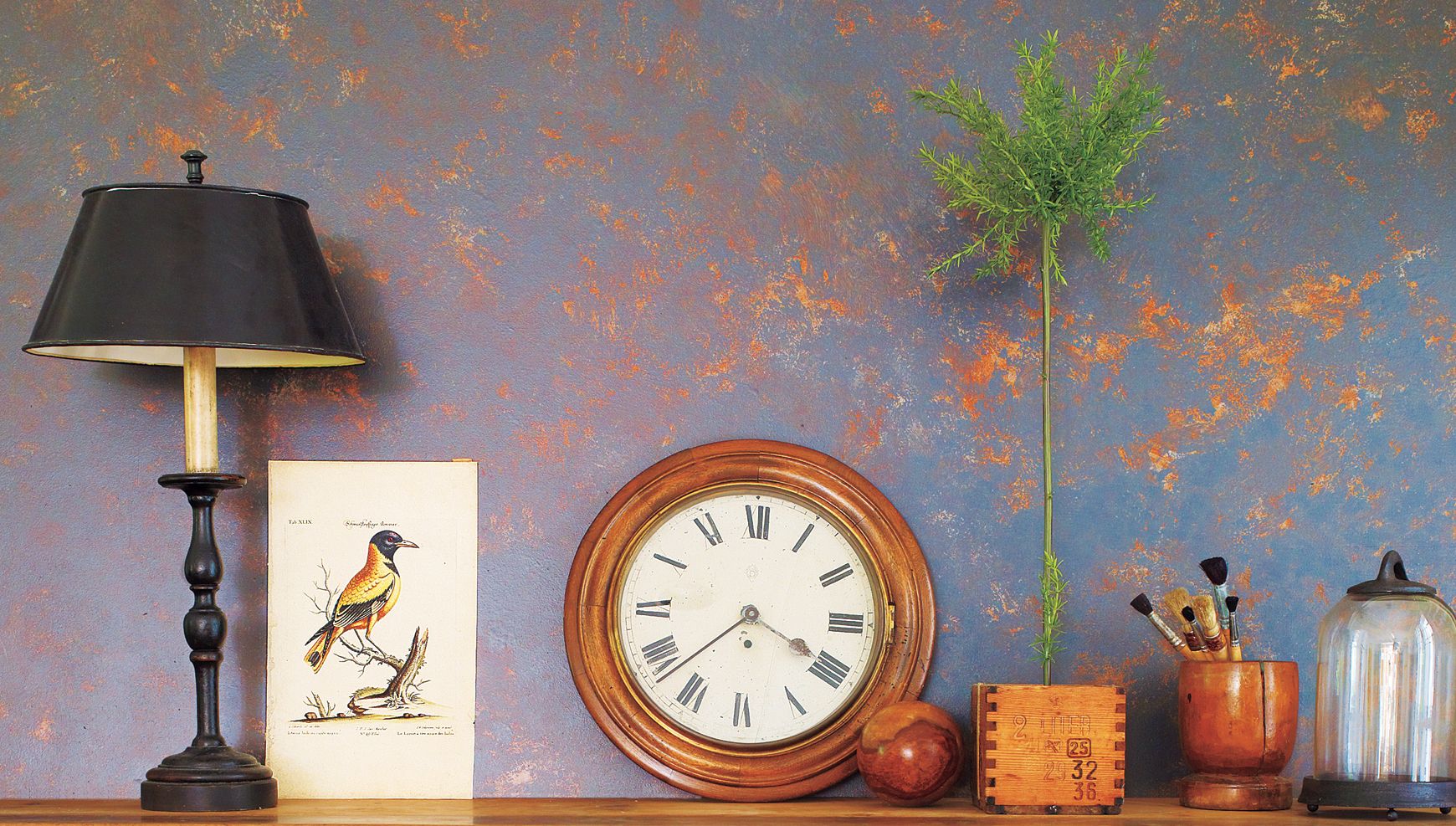Sponge painting is a classic technique that can transform a plain wall into a textured, multi-dimensional head-turner. This method involves applying layers of different-colored paint using a sponge, creating a unique pattern that can mimic other surfaces or create abstract art.
Sponge painting can be a great way to create an accent wall or to add interest to architectural features like alcoves or built-in shelving.
In this guide, we’ll walk you through each step of the process of sponge painting a wall, as well as tackle common troubleshooting issues and go over the benefits of sponge painting.
Why Sponge Paint Your Walls?
Sponge painting offers several advantages over traditional solid-color painting:
- Adds visual interest and depth to flat walls
- Hides minor imperfections in the wall surface
- Creates a unique, customized look
- Relatively easy to learn and execute
- Can be less expensive than wallpaper or other decorative finishes
Besides these immediate benefits, sponge painting is an excellent introduction to more complex decorative painting techniques. If you’re hesitant to invest in expensive materials or professional services, sponge painting offers an affordable yet effective alternative.
Essential Tools and Materials for Sponge Painting
Before you begin your sponge painting project, you’ll want to find the best sponge and select the paint color that best fits your design plan. Additionally, you’ll need other supplies on hand.
 Latex gloves
Latex gloves Natural sea sponge
Natural sea sponge
Choosing the Right Sponge
The key to successful sponge painting lies in selecting the right tool. Natural sea sponges are ideal for this technique due to their irregular texture and ability to hold paint. Look for sponges that are roughly four to six inches in diameter, with a variety of pore sizes for the best effect.
Selecting Your Paint Colors
Choosing the right colors can make or break your sponge painting project. Opt for a base coat color and one or two glaze colors that complement each other. For a subtle effect, select colors within the same family. For more contrast, opt for complementary colors. Latex paint works well for the base coat, while a mixture of paint and glaze is used for the top layers.
You can also experiment with different color combinations to achieve various effects, such as:
- Earthy tones for a natural, stone-like appearance
- Blues and greens for a watery, oceanic feel
- Warm yellows and oranges for a sun-kissed glow
- Metallic glazes for an elegant, shimmering effect
How to Sponge Paint a Wall
With your tools and materials in hand, you’re ready to begin.
Step 1: Clean and Repair the Surface
Start by thoroughly cleaning the wall to remove any dirt, dust, or grease. Fill any holes or cracks with spackle and sand smooth once dry. Wipe down the wall with a damp cloth and allow it to dry completely.
Step 2: Apply the Base Coat
Apply painter’s tape around all trim, windows, and doors, and cover the floor with drop cloths. Then, use a paint roller to cover the wall with the base color you’ve chosen. This hue will show through the least once it’s topped with other paints, so choose a paint color that won’t dominate.
Step 3: Sponge on the First Top-Coat Color
Once the base coat is dry, mix equal parts glaze and a top-coat color and mask off any areas you don’t want to sponge.

Wet a large sea sponge, wring it out, and dip it in the glaze. Squeeze out any excess and use the loaded sponge to cut in at the top left corner of the wall.
Continue patting it against the wall in a random pattern, working out from the corner, top to bottom. The glaze should go on thick and textured but shouldn’t drip. The base coat color should still come through.
Step 4: Add Multiple Layers of Color
For a more complex look, allow the first layer to dry completely, then repeat the process with a second color. This layering technique can create depth and richness in your finish. Additional layers can make the wall appear multi-dimensional, adding an artistic flair that is hard to achieve with single-color methods.
Troubleshooting Common Sponge Painting Issues
Even experienced painters may encounter challenges. Here’s how to address common problems and refine your technique.
Fixing Drips and Streaks
If you notice drips or streaks, quickly blot them with a dry sponge or cloth. For more stubborn issues, wait until the paint is dry, then lightly sand the area and reapply the base coat before sponging again. Ensuring that your sponge is damp but not overly saturated can help minimize this issue.
Addressing Uneven Coverage
If some areas appear too light or dark, wait for the paint to dry, then apply an additional layer of sponge painting to even out the coverage. Remember, some variation is part of the charm of this technique. A varied texture often enhances the overall look, giving the wall a more artisanal appearance.
Maintaining Your Sponge-Painted Walls
Sponge-painted walls are generally as durable as any other painted surface. However, there are some specific ways to maintain their unique texture. Clean them gently with a soft, damp cloth when needed. Avoid harsh scrubbing, which can remove the textured finish.
Touch up any scratches or marks by spot-sponging with the original color mixture. Regularly inspecting the walls for any wear and tear can help you keep them looking fresh for years to come.
Our Conclusion
Sponge painting is a versatile and accessible decorative painting technique that can dramatically transform the look of any room. With the right tools, colors, and technique, you can create a unique and personalized wall finish that adds depth and interest to your space.





